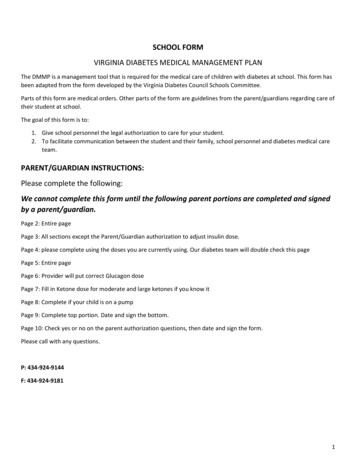
Transcription
SCHOOL FORMVIRGINIA DIABETES MEDICAL MANAGEMENT PLANThe DMMP is a management tool that is required for the medical care of children with diabetes at school. This form hasbeen adapted from the form developed by the Virginia Diabetes Council Schools Committee.Parts of this form are medical orders. Other parts of the form are guidelines from the parent/guardians regarding care oftheir student at school.The goal of this form is to:1. Give school personnel the legal authorization to care for your student.2. To facilitate communication between the student and their family, school personnel and diabetes medical careteam.PARENT/GUARDIAN INSTRUCTIONS:Please complete the following:We cannot complete this form until the following parent portions are completed and signedby a parent/guardian.Page 2: Entire pagePage 3: All sections except the Parent/Guardian authorization to adjust insulin dose.Page 4: please complete using the doses you are currently using. Our diabetes team will double check this pagePage 5: Entire pagePage 6: Provider will put correct Glucagon dosePage 7: Fill in Ketone dose for moderate and large ketones if you know itPage 8: Complete if your child is on a pumpPage 9: Complete top portion. Date and sign the bottom.Page 10: Check yes or no on the parent authorization questions, then date and sign the form.Please call with any questions.P: 434-924-9144F: 434-924-91811
Virginia Diabetes Medical Management Plan (DMMP)2020-2021This plan should be completed by the student’s personal diabetes health care team, including the parents/guardians. It should bereviewed with relevant school staff and copies should be kept in a place that can be accessed easily by the school nurse, trained diabetespersonnel, and other authorized personnel.Student informationStudent’s name:Date of birth:Date of diabetes diagnosis: Type 1 Type 2 Other:School: School phone number:Grade: Homeroom teacher:School nurse: Phone:Contact informationParent/guardian 1:Address:Telephone: Home:Work: Cell:Email address:Parent/guardian 2:Address:Telephone: Home:Work: Cell:Email address:Student’s physician / health care provider: University of Virginia Pediatric Endocrinology/DiabetesAddress: P.O. Box 800386, UVA Health Care System, Charlottesville, VA 22908Telephone Number: 434-924-9144Fax Number: 434-924-9181Providers: Deborah Gleason NP, Pamela Bailey NP, Dr. David Repaske, Dr. Christine Burt Solorzano, Dr. KellyMason, Dr. Melissa Schoelwer, Dr. Mark DeBoer, Dr. Lauren Wood Heickman, Dr. Amy Kakkanatt, Dr. RebecaEsquivel-ZunigaOther emergency contacts:Name: Relationship:Telephone: Home:Work: Cell:2
Insulin AdministrationBefore meals per carb ratios and correction factorFor snacks: No coverage for snack Carbohydrate coverage only Carbohydrate coverage plus correction dose when blood glucose is greater than mg/dL and hours sincelast insulinlast insulin dose.Parents/Guardians Authorization to Adjust Insulin DoseParents/guardians are authorized to increase or decrease correction dose formula Yes NoParents/guardians are authorized to increase or decrease insulin-to carbohydrateratio from:1 unit for every grams of carbohydrate to1 unit for every grams of carbohydrate Yes NoParents/Guardians Authorization to Give Correction insulin doses between meals for moderate orlarge ketonesSchool personnel authorized to give correction dose between meals if it has been 3hours since the last correction insulin was given and moderate or large ketones arepresent Yes NoStudent’s Self-Care Insulin Administration Skills Independently calculates / gives own injections. May calculate / give own injections with supervision. Requires a school nurse or trained diabetes personnel to calculate dose and student can giveown injection with supervision. Requires a school nurse or trained diabetes personnel to calculate dose and give the injection.3
Insulin therapyInsulin delivery device: Injections Insulin pump (additional information on page 6)Type of Insulin therapy at school: Adjustable (basal-bolus) insulin No InsulinAdjustable (Basal-Bolus) Insulin TherapyInsulin Type: Apidra ; Novolog; or HumalogTOTAL PRE-MEAL INSULINCORRECTION DOSE:DOSEISCARBOHYDRATECOVERAGEPLUSCarbohydrate Coverage/ Insulin-to-carbohydrate ratio: Breakfast: 1 unit of insulin per gm of carbohydrate Lunch: 1 unit of insulin per gm of carbohydrate Snack: 1 unit of insulin per gm of carbohydrateCarbohydrate Dose Calculation ExampleTotal Grams of Carbohydrate to Be Eaten Units of InsulinInsulin-to-Carbohydrate Ratio Correction Dose for pre meal insulin dose calculationBlood glucose correction factor (insulin sensitivity factor) Target blood glucose mg/dLCorrection Dose Calculation ExampleCurrent Blood Glucose Target Blood Glucose Units of InsulinCorrection FactorIf moderate or large ketones present at mealtime and blood glucose is 200, then add thefollowing extra insulin for ketones:Correction Dose for moderate ketones:Above correction calculation plusCorrection dose for large ketonesAbove correction calculation plusThis correction dose is also the same dose as for in between meal corrections doses ifneeded for moderate or large ketones. If BG 200 with moderate or large ketones, callPediatric Endocrinology before administering additional insulin.4
Checking blood glucoseCheck blood glucose level by finger stick if not using a CGM Before breakfast if breakfast is eaten at school Before lunch Before/After PE: discuss with parent Before dismissal if requested by parent As needed for signs/symptoms of illness As needed for signs/symptoms of high / low blood glucose Other:Student’s self-care blood glucose checking skills: Independently checks own blood glucose May check blood glucose with supervision Requires a school nurse or trained diabetes personnel to check blood glucose Uses a smartphone or other monitoring technology to track blood glucose valuesContinuous Glucose Monitoring (CGM) Yes NoBrand/model:Alarms set for: Severe Low: Low: High:Additional information for student with CGM Confirm CGM results with a blood glucose meter check before taking action on the sensor blood glucose level only ifblood glucose is less than 70Insulin injections should be given at least three inches away from the CGM insertion site.Do not disconnect from the CGM for sports activities.If the adhesive is peeling, reinforce it with any medical adhesive or tape the parent / guardian has provided.If the CGM becomes dislodged, remove, and return everything to the parents/guardian. Do not throw anythingaway.Student’s Self-care CGM SkillsThe student is able to troubleshoot alarms and malfunctions.The student is able to respond to HIGH alarm.The student is able to respond to LOW alarm.The student is able to respond when the CGM indicates a rapidtrending rise or fall in the blood glucose level.The student should be escorted to the nurse if the CGM alarmsIndependent? Yes No Yes No Yes No Yes No High Low5
Hypoglycemia (Low Blood Glucose)Hypoglycemia: Any blood glucose below 70 mg / dL checked by blood glucose meter.Possible symptoms of hypoglycemiaHungerConfusionHeadacheSweatingLoss of coordinationInability to assing-outDizzinessCryingSeizureMild to Moderate Hypoglycemia:Student is exhibiting symptoms of hypoglycemia AND blood glucose level is less than 70 mg/dL1. Give a quick acting glucose product equal to 15 grams fast-acting carbohydrate such as:glucose tablets, juice, glucose gel, gummies, skittles, starbursts2. Recheck blood glucose in 15 minutes3. If blood glucose level is still 70 repeat treatment with 15 grams of fast-acting carbohydrates andrechecking blood glucose in 15 minutes. Repeat until blood glucose is over 70.4. Once blood glucose is over 70, assess when next meal will be eaten. If in less than 1 hour, no furthertreatment needed.5. If next meal is greater than 1 hour away, then give a 15 gram snack with protein.Severe Hypoglycemia:Student is unable to eat or drink, is unconscious or unresponsive, or is having seizure activity or convulsions(jerking movement)1. Position the student on his or her side to prevent choking2. Administer glucagon Dose: 1 mg 0.5 mg OtherRoute: Intramuscular (IM)Site: Mid/ Upper ThighOR:Baqsimi(age 4 and up)Dose: 3 mgRoute: IntranasalSite: Nostril3. Call 911 (Emergency Medical Services) AND the student’s parents / guardians. AND the health care provider.6
4. If on INSULIN PUMP, Stop insulin pump by any of the following methods: Place pump in “suspend” or “stop mode” (See manufacturer’s instructions) Disconnect at siteALWAYS send pump with EMS to hospitalHyperglycemia (High Blood Glucose)Hyperglycemia: Any blood glucose above 300 mg/dLPossible symptoms of hyperglycemiaExtreme thirstNauseaFrequent urinationHyperactivityBlurry VisionIrritableHungerDizzinessHeadacheStomach acheKetonesIf blood glucose is above 300 mg/ dL , AND when student complains of nausea, vomiting orabdominal pain, check for ketones.If urine ketones are negative to small or blood ketones 0.6 mmol/L - 1.0 mmol/L:Allow student to sip on water up to 8-16 ounces per hour2. Return student to classroom3. Recheck blood glucose (and blood ketones if applicable) in 2 hours1.4.Recheck urine for ketones with every void until they have clearedIf urine ketones are moderate or blood ketones 1.0-1.5 mmol/L:1.2.3.4.5.6.Do NOT allow student to participate in exerciseCall parent / guardianIf insulin has not been administered within the past 3 hours and OK’d by parent/guardian orchecked in the Parents/Guardians authorization to adjust insulin dose section , give the correctiondose based on correction factor PLUS extra ketone dose of ONLY if BG 200. If BG 200,then call Pediatric Endocrinology before administering additional insulin.Allow student to return to classroom if not having symptoms of illness.Recheck blood glucose and blood ketones within 2 hours.Check urine for ketones with each void.7
If urine ketones are large or blood ketones are 1.6 mmol/L or greater:1. DO NOT allow student to participate in PE or exercise.2. Call parent or guardian. If unable to reach parent/guardian call healthcare provider.3. Parent/guardian to come pick student up for home management.4. If insulin has not been administered within the past 3 hours and OK’d by parent/guardian orchecked in the Parents/Guardians authorization to adjust insulin dose section, give the correctiondose based on correction factor and target blood glucose PLUS extra ketone dose ofONLY if BG 200. If BG 200, then call Pediatric Endocrinology beforeadministering additional insulin.IF ON INSULIN PUMP: See Additional Information for Student with Insulin PumpHYPERGLYCEMIA EMERGENCY When large ketones are associated with thefollowing symptoms Call 911Heavy breathing or shortnessof breathNausea and vomitingIncreasing sleepiness orlethargyChest painSevere abdominal painDepressed level ofconsciousnessAdditional Information for Students with Insulin PumpsBrand / model of pump: Insulin Type: Apidra ; Novolog; or HumalogOther pump instructions:HYPERGLYCEMIA MANAGEMENTIf Blood glucose greater than 300 mg/dL that has not decreased within 2 hours after correction orIf student has moderate to large ketones. Notify parents/ guardians.For suspected pump failure: Suspend or remove pump and give insulin by syringe or pen.Do not discard any pump supplies. Send everything home with parents.Adjustments for Physical Activity Using Insulin PumpMay disconnect from pump for sports activities: Yes, for hours NoSet temporary basal rate Yes, % temporary basal for hours NoSuspend pump use: Yes, for hoursStudent’s Self-care Pump SkillsCounts carbohydrates NoIndependent? Yes No8
Calculates correct amount of insulin for carbohydrates consumedAdministers correction bolusCalculates and sets basal profilesCalculates and sets temporary basal rateChanges batteriesDisconnects pumpReconnects pump to infusion setPrepares reservoir, pod, and/or tubingInserts infusion setTroubleshoots alarms and malfunctions Yes Yes Yes Yes Yes Yes Yes Yes Yes Yes No No No No No No No No No NoIn case of pump failure while at school, immediately call parents, and give Humalog or Novolog(rapid acting) for corrections and carb coverage every three hours until the child can get a dose ofLantus or Basaglar (long acting) at home. Then cover (as usual) at meals using rapid acting insulinuntil pump is replaced.Other diabetes medicationsName: Dose: Route: Times given:Name: Dose: Route: Times given:Instructions for when food is provided to the class(e.g., as part of a class party or food sampling event):Special event/party food permitted: Parents’/Guardians’ discretion Student discretionStudent’s self-care nutrition skills: Independently counts carbohydrates May count carbohydrates with supervision Requires school nurse/trained diabetes personnel to count carbohydratesPhysical activity - A quick-acting source of glucose must be available at the site of physical educationactivities. Examples include glucose tabs, sugar-containing juice.Student may participate in PE unless blood glucose is less than 70 mg/dL or greater than 300 mg/dL withketones.If blood glucose before PE is 70 mg/dL treat using hypoglycemia guidelines. Student may participate onceblood glucose is over 100 mg/dL.If blood glucose is between 70-100 mg/dL give a 15 gram snack with protein (example is peanut buttercrackers). Student may then participate in PE.Disaster plan - To prepare for an unplanned disaster or emergency (72 hours), obtain emergency supply kit9
from parents/guardians. Continue to follow orders contained in this DMMP. Other:Signature This Diabetes Medical Management Plan has been approved by:Parent / Guardian Name / Signature :Date:School representative Name / Signature:Date:Student’s Physician / Health Care ProviderDate:Authorization to treat and administer medication for theVirginia School Diabetes Medical Management PlanAuthorization to Treat and Administer Medication as Required by Virginia LawMy signature below provides authorization for the Virginia Diabetes Medical Management Plan contained herein. I understand thatall treatments and procedures may be performed by the student, the school nurse, unlicensed trained designated school personnel,as allowed by school policy, state law or emergency services as outlined in this plan. I give permission to the school nurse anddesignated school personnel who have been trained to perform and carry out the diabetes care tasks for the student as outlined inthe student’s Diabetes Medical Management Plan as ordered by the prescribing health care provider (Code of Virginia § 22.1-274).I give permission to the student to carry with him/her and use supplies, including a reasonable and appropriate short-term supply ofcarbohydrates, an insulin pump, and equipment for immediate treatment of high and low blood glucose levels, and to self-checkhis/her own blood glucose levels on a school bus, on school property, and at a school-sponsored activity (Code of Virginia §22.1274.01:1).Parent authorization for student to self-administer insulin YES NOParent authorization for student to self-monitor blood glucose YES NOMy signature below provides authorization for a local school board employee who is a registered nurse or licensed practical nurseand who has been trained in the administration of insulin, including the use and insertion of insulin pumps, that they may assist thestudent with the insertion or reinsertion of the insulin pump or any of its parts (Code of Virginia §22.1-274.01:1).I also consent to the release of information contained in this Diabetes Medical Management Plan to all school staff members andother adults who have responsibility for my student and who may need to know this information to maintain my student’s healthand safety. I also give permission to the school nurse or another qualified health care professional to contact my student’s diabeteshealth care providers.Parent / Guardian Name / Signature :Date:10
School representative Name / Signature:Date:Student’s Physician / Health Care ProviderDate:Suggested Supplies to Bring to School Glucose meter, testing strips, lancets Insulin(s), syringes, and/or insulin pen(s)and supplies Insulin pump and supplies in case offailure: Reservoirs, sets, prep wipes, pumpbatteries / charging Treatment for low blood sugar (see page 3)Protein containing snacks: such as granola barsWaterGlucagon emergency kitAntiseptic wipes or wet wipesUrine and/or blood ketone test strips and meterOther medication needed during school hours11
Breakfast: 1 unit of insulin per_ gm of carbohydrate Lunch: 1 unit of insulin per_ gm of carbohydrate Snack: 1 unit of insulin per_ gm of carbohydrate Carbohydrate Dose Calculation Example Total Grams of Carbohydrate to Be Eaten Insulin-to-Carbohydrate Ratio Correction Dose for pre meal insulin dose calculation
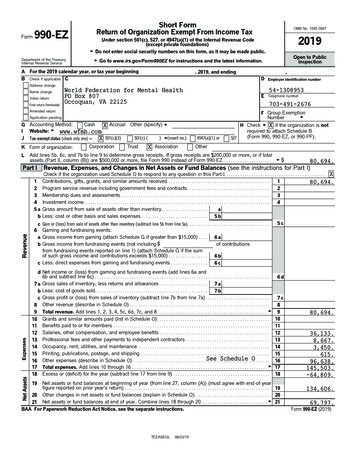
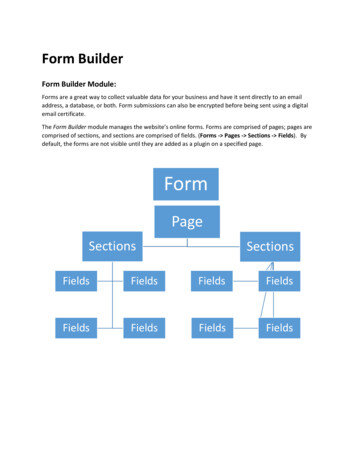
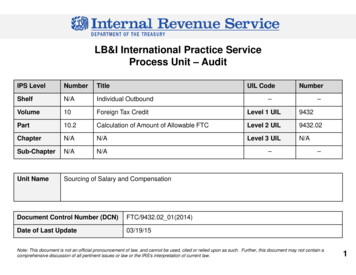
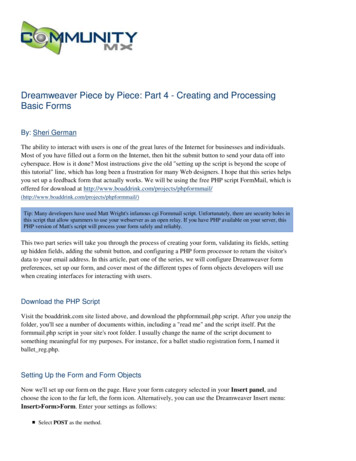
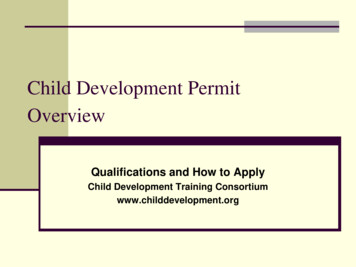



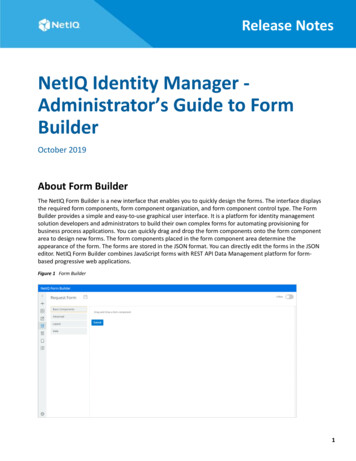

![[MS-IPFFX]: InfoPath Form File Format - Microsoft](/img/62/ms-ipffx.jpg)
![[MS-IPFFX]: InfoPath Form File Format](/img/62/5bms-ipffx-5d-210720.jpg)